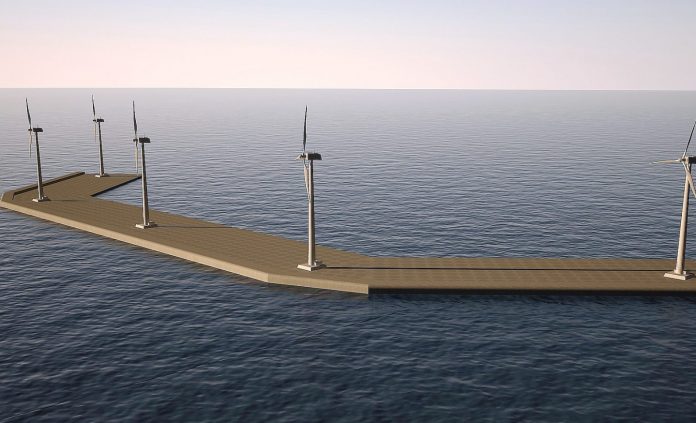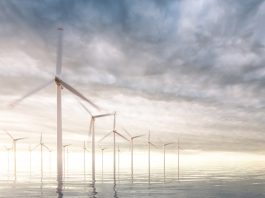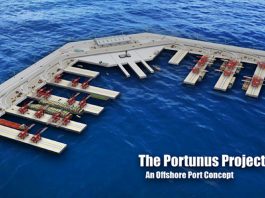Float Europe‘s groundbreaking offshore floating ocean energy technology is driving a paradigm shift in offshore renewables to capitalise on the significant power of the seas fully.
As the world grapples with a pressing need for sustainable energy solutions, the potential of offshore floating ocean energy becomes increasingly significant.
This nascent form of renewable energy promises vast untapped potential that will be pivotal in the global energy transition.
However, to harness this potential effectively and sustainably, there is an urgent necessity for its scalability and operation. With Europe setting ambitious targets for floating wind and ocean energy generation, this field is poised for rapid progress in technology and deployment.
However, as with any emerging technological domain, there are formidable challenges associated with offshore floating ocean energy systems, ranging from technical difficulties related to design and installation, to operational hurdles concerning maintenance and efficiency optimisation.
These challenges, however, can be overcome with Float Europe’s offshore floating ocean energy technologies. This article will explore how the company’s revolutionary solutions will help realise the full potential of offshore renewable.
What are Europe’s targets for offshore floating ocean energy?
In light of the potentiality of offshore floating ocean energy, Europe has set ambitious targets for its development and scaling up in an endeavour to transition towards a more sustainable global energy landscape.
The European Union’s strategic roadmap involves large-scale deployment of floating wind technologies, aiming to reach 100-150 GW by 2050.
This goal underscores Europe’s recognition of the immense potential for floating ocean technology not only to reduce greenhouse gas emissions but also to stimulate economic growth through new market opportunities for floating ocean energy.
The environmental impact of floating ocean energy is another aspect that bolsters its appeal. Unlike conventional onshore or bottom-fixed offshore wind farms, the floating variety does not require extensive land use or seabed alterations – characteristics that mitigate their environmental footprint significantly.
Thus, while challenges persist, Europe’s ambitious targets reflect an increasing global commitment to optimise the scalability and operation of this promising renewable resource.
Advantages of offshore floating ocean energy compared to traditional renewables
Harnessing the power of our vast seas through floating ocean energy platforms presents a compelling solution to global energy needs, outperforming other renewables with its potential for greater capacity and consistency.
Cost-effectiveness is one notable advantage, as the abundant availability of marine resources reduces reliance on expensive fossil fuels or land-based renewable sources.
Technological advancements in this field further enhance efficiency, translating into lower operational costs over time compared to conventional forms of renewable energy such as solar.
Moreover, sea-based installations mitigate problems associated with land scarcity and usage conflicts often faced by terrestrial operations.
Offshore floating ocean energy also scores high on environmental impact considerations due to its minimal disruption to ecosystems when compared with other forms of renewable exploration methods that may involve intrusive processes like drilling or deforestation.
These systems harness natural tidal patterns without altering them significantly, thus maintaining ecological balances while generating power.
The future potential of floating ocean energy is immense due to resource availability; oceans cover about 70% of the Earth’s surface and hold enormous untapped energy potential.
With ongoing research and development in this sphere, it is conceivable that floating ocean power could become a primary contributor to global green energy generation in the near future.
Industry challenges
Despite the promising potential of sea-based renewable power systems, there exist several challenges that could impede their widespread adoption and implementation.
One of the main hurdles lies in design considerations; developing structures that can withstand harsh marine conditions such as strong currents, high winds, and corrosive saltwater requires significant technological advancements.
Furthermore, ensuring cost efficiency remains a complex issue as offshore floating ocean energy projects often require substantial upfront investment for technology development, deployment, and maintenance.
The challenge expands beyond just design to grid integration. Given the variability of wind speeds and wave heights at sea, integrating offshore floating ocean energy into existing power grids poses a significant technical obstacle.
This intermittent nature of production presents difficulties in maintaining a consistent electricity supply, which accentuates the need for efficient storage solutions or backup power systems.
Additionally, maintaining sea-based renewable power systems presents unique challenges, with studies indicating that operational and maintenance costs could account for up to 25% of the total lifecycle cost of some installations.
The scalability challenges are primarily linked to the harsh marine environment, logistical complexities, and difficulty conducting regular inspections and repairs on offshore structures.
Therefore, it becomes clear that for optimal scalability and operation of offshore floating ocean energy, overcoming these challenges is vital, of which Float Europe has pioneered the solution.
Float Europe: The definitive offshore floating ocean energy solution
Float Europe is advancing offshore floating ocean energy to new frontiers with state-of-the-art technologies. The company provides project development services, including research, design, and development of marine technology products specialising in large floating platforms.
The company’s premier technologies – the Pneumatically Stabilized Platform (PSP) and Rho-Cee Wave Energy Converter – eradicate the challenges of conventional systems to reap the vast benefits of offshore renewables.
How does the Pneumatically Stabilized Platform work?
The PSP system is a revolutionary technology that enables the construction of massive floating platforms of limitless size.
These platforms can be deployed in areas with extreme wave conditions and offer unparalleled stability compared to other marine technologies.
The PSP relies on a patented design, utilising a network of open-bottom cylinders filled with pressurised air to generate buoyancy.
Key characteristics of PSP Marine Technology include its ability to handle high deck loads with a gentle response to waves, a remarkable lifespan of over 70 years with minimal maintenance, and no need for periodic dry docking.
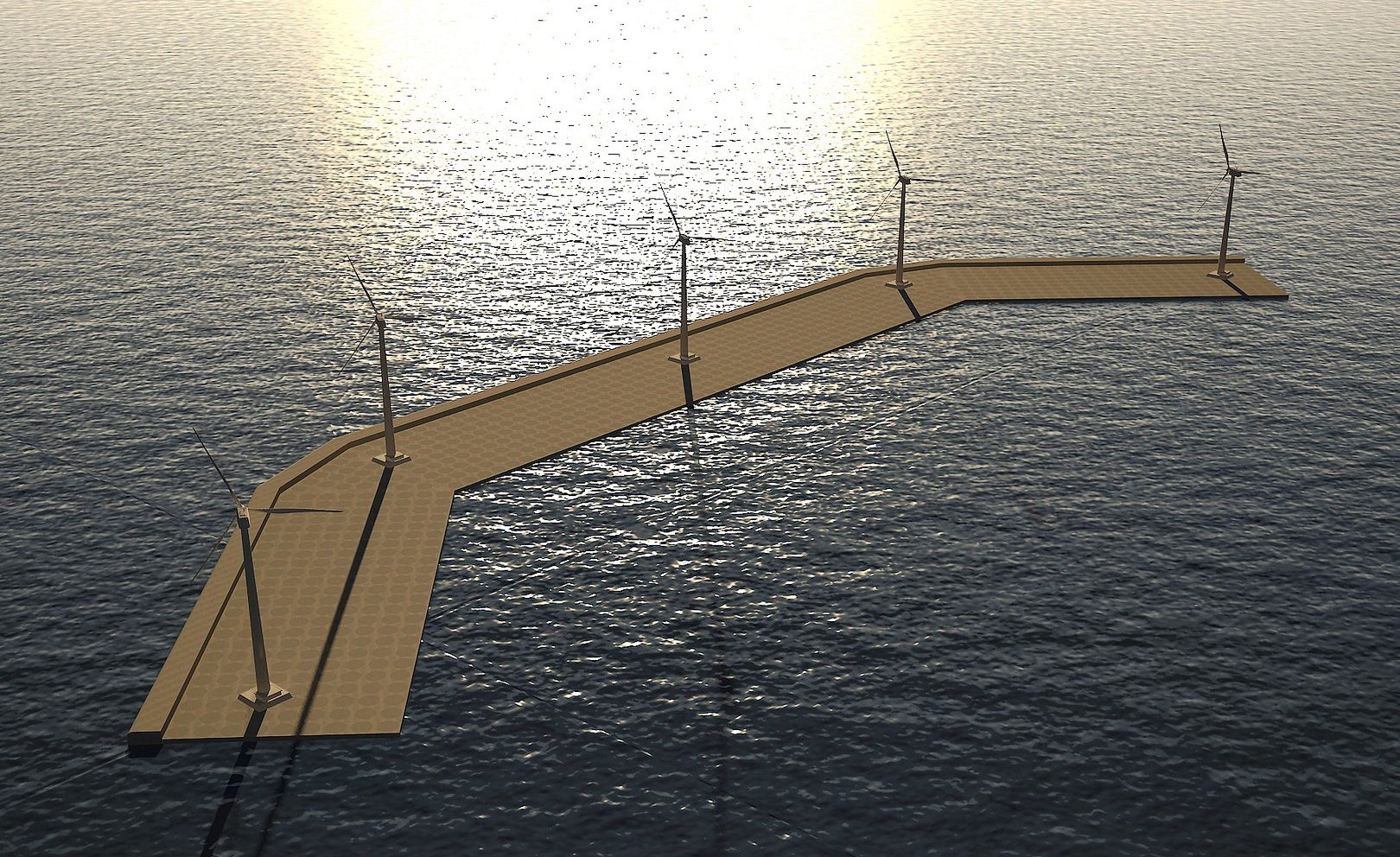
PSPs can be deployed in any water depth and can accommodate various energy sources such as waves, wind, and currents. They are versatile, serving multiple functions like lodging, dining, medical facilities, and maintenance spaces.
The PSP’s exceptional motion stability stems from the flexibility of its buoyancy air, which can be adjusted in real-time using ducting and Roots-type blowers to counteract ocean wave pressures.
As a significant portion of its buoyancy relies on pressurised air, PSPs can store substantial potential energy, which can be tapped into during periods of low wave activity to meet varying electrical load demands.
Inside the Rho-Cee Wave Energy Converter
The Rho-Cee Wave Energy Converter is an innovative system designed for efficient wave energy conversion.
It operates as a broadband, impedance-matched structure, effectively harnessing the power of waves and converting it into usable electrical energy.
This renewable energy source is versatile and can be used onboard the PSP in various configurations or transmitted to the mainland via submarine cables.
A unique feature of the system is its ability to store excess energy. When the generated electricity is not immediately needed, it can be converted into compressed air and stored within the PSP’s interstitial spaces, providing an estimated storage capacity of 10MWh per hectare.
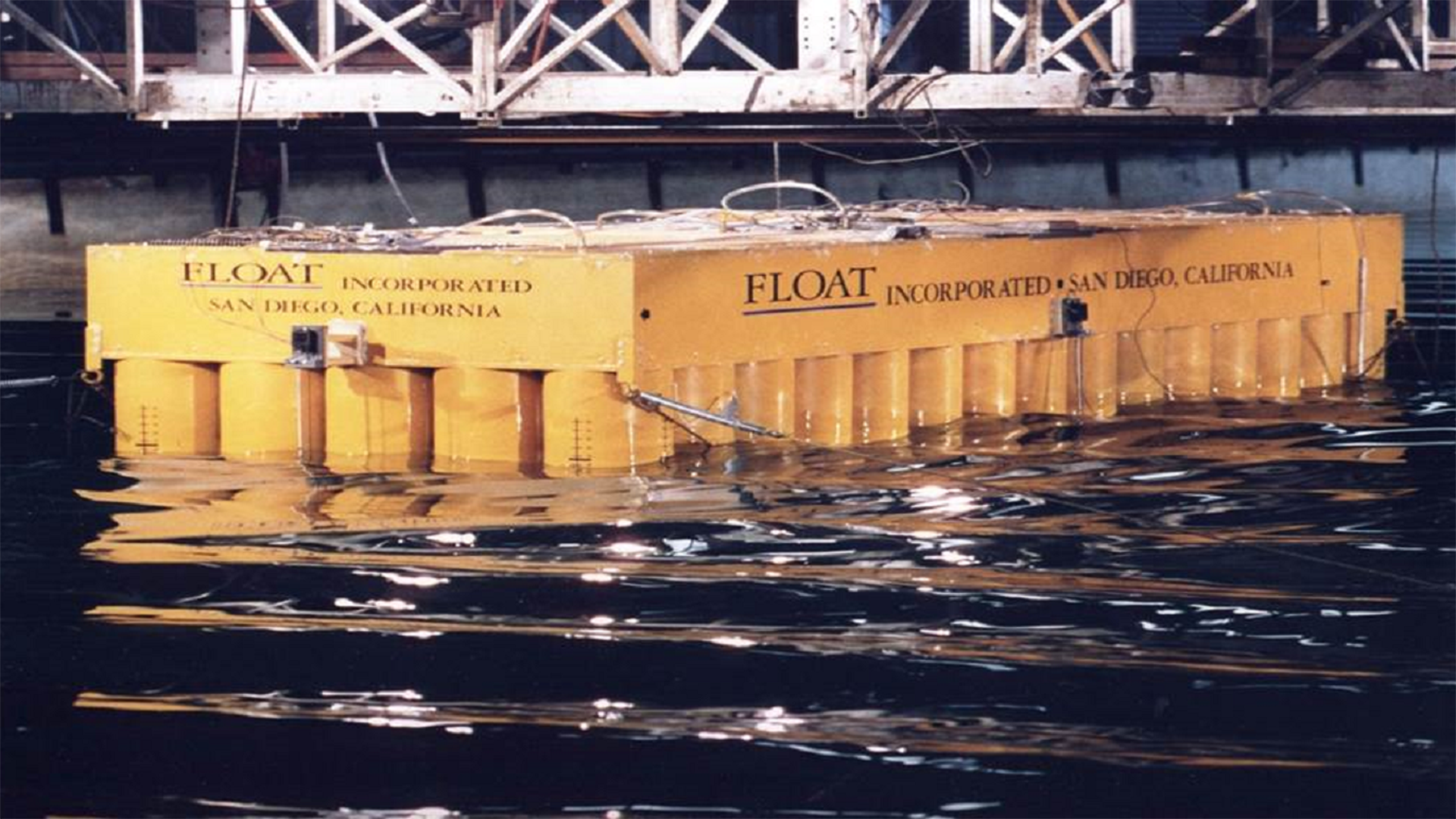
The performance of the Rho-Cee WEC has been promising, with capture rates ranging from 50% to 94%, depending on the prevailing wave conditions.
This technology holds significant potential for sustainable energy generation and storage, making it a valuable asset in pursuing clean and renewable power sources.
With maintenance personnel onboard the offshore floating ocean energy systems, Float Europe’s technologies will expertly overcome the challenges of operation, scalability, and deployment, reducing deadline time and maximising energy production.

